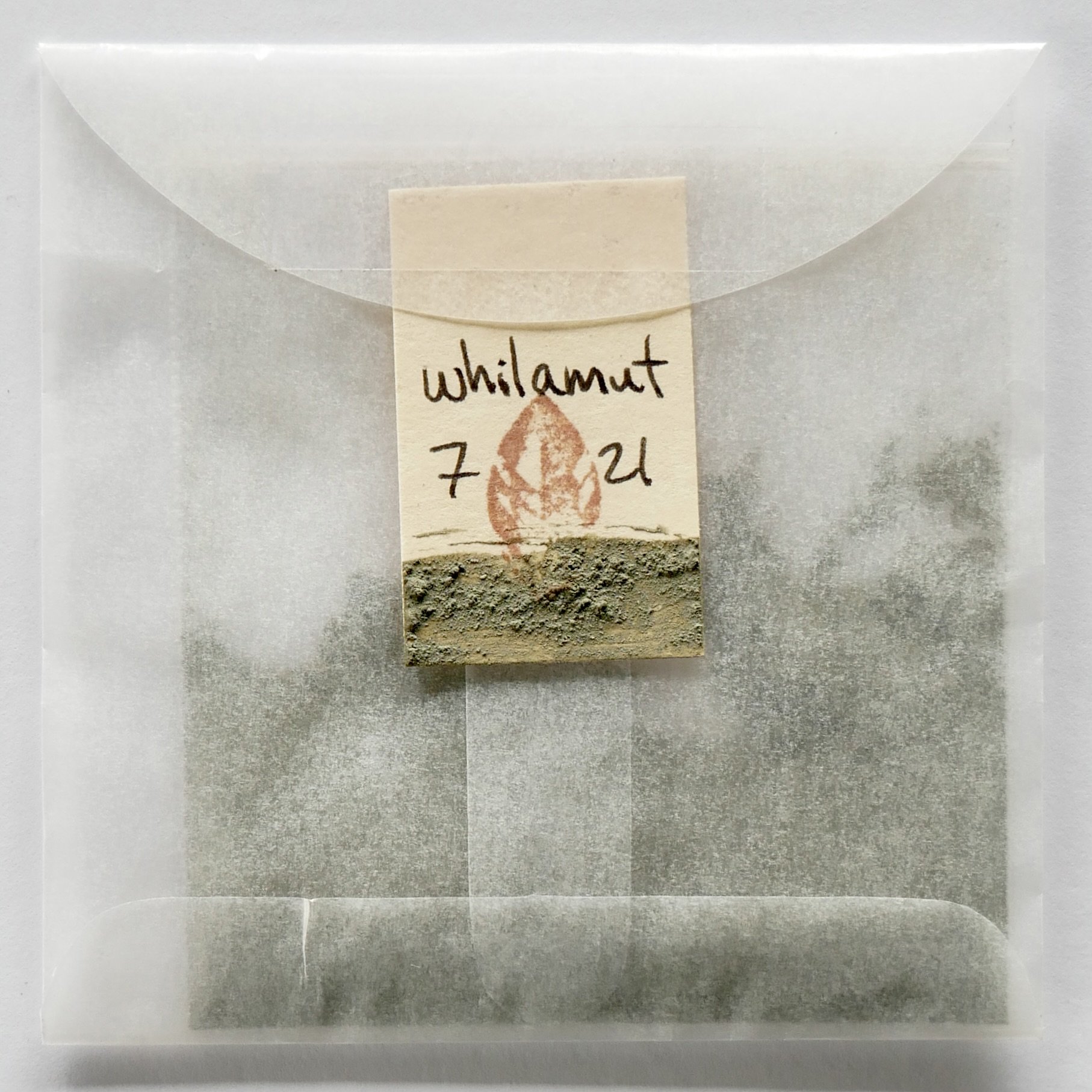whilamut : july ‘21
Contributor Tilke Elkins writes: “I foraged this beautiful green mineral pigment on the banks of a large river close to my home, near what was, fewer than than 200 years or so ago, a Chiffin Kalapuya village. The river, now called “the Willamette” by settler culture, is thought by some to have been named for the Yoncalla Kalapuya word, ‘whilamut,’ which means, ‘where the river ripples and runs fast.’
Geologically speaking, this pigment was likely formed during the Oligocene, a period between 33 million years ago and 5 or so million years ago, as sediment settling in relatively shallow sea water. It’s green because it contains iron. Even geologists seem to have trouble saying exactly what determines its greenness, though they agree that it has something to do with the presence of iron in different states of oxidation — both reduced and fully oxidized. Since this is an area of olivine basaltic flows, and olivine is green, I have reason to believe that the presence of olivine could be responsible for the green hue. When you add binder to this pigment, and paint with it, you’ll notice it has a distinct slightly yellowish, deep olive green color.
‘Whilamut’ contains both iron and silicon. Silicon, like iron, is a non-toxic mineral, but when crushed can form such tiny particles that they can clog lung tissue. Since 90% of the minerals in the earth’s crust are silicate minerals, it’s best to always wear a mask when working with any dry mineral pigment.
contributor : tilke elkins
Tilke is the founding director of Wild Pigment Project and has been researching and painting exclusively with mineral, botanical and waste stream-derived pigments as paint since 2007. Working on the banks of the Willamette River on Kalapuya lands (also called Springfield, Oregon), she teaches wild pigment studies widely and offers private online mentoring. Recent course offerings include Pigments of Place, Palette Remediation, Being With Pigments, and the Poetics of Pigment, co-taught with artist and poet Daniella Molnar. She is a co-organizer of the Pigments Revealed Symposium, which launched in June 2021.
22% donation recipient : Komemma Cultural Protection Association
KCPA preserves the culture, history and traditions of the Kalapuya Indians of Western Oregon. They promote Kalapuya culture and engage American Indian youth in leadership opportunities while dismantling entrenched anti-Indian beliefs, attitudes and practices in Douglas County.
Kalapuya Elder Esther Stutzman has run summer culture camps for kids through the organization for the last 40 years. This year, plans are being developed to establish a center for the camp on ancestral Yoncalla Kalapuya land that has been donated to KCPA.
www.mrgfoundation.org/grantees/komemma-cultural-protection-association/




